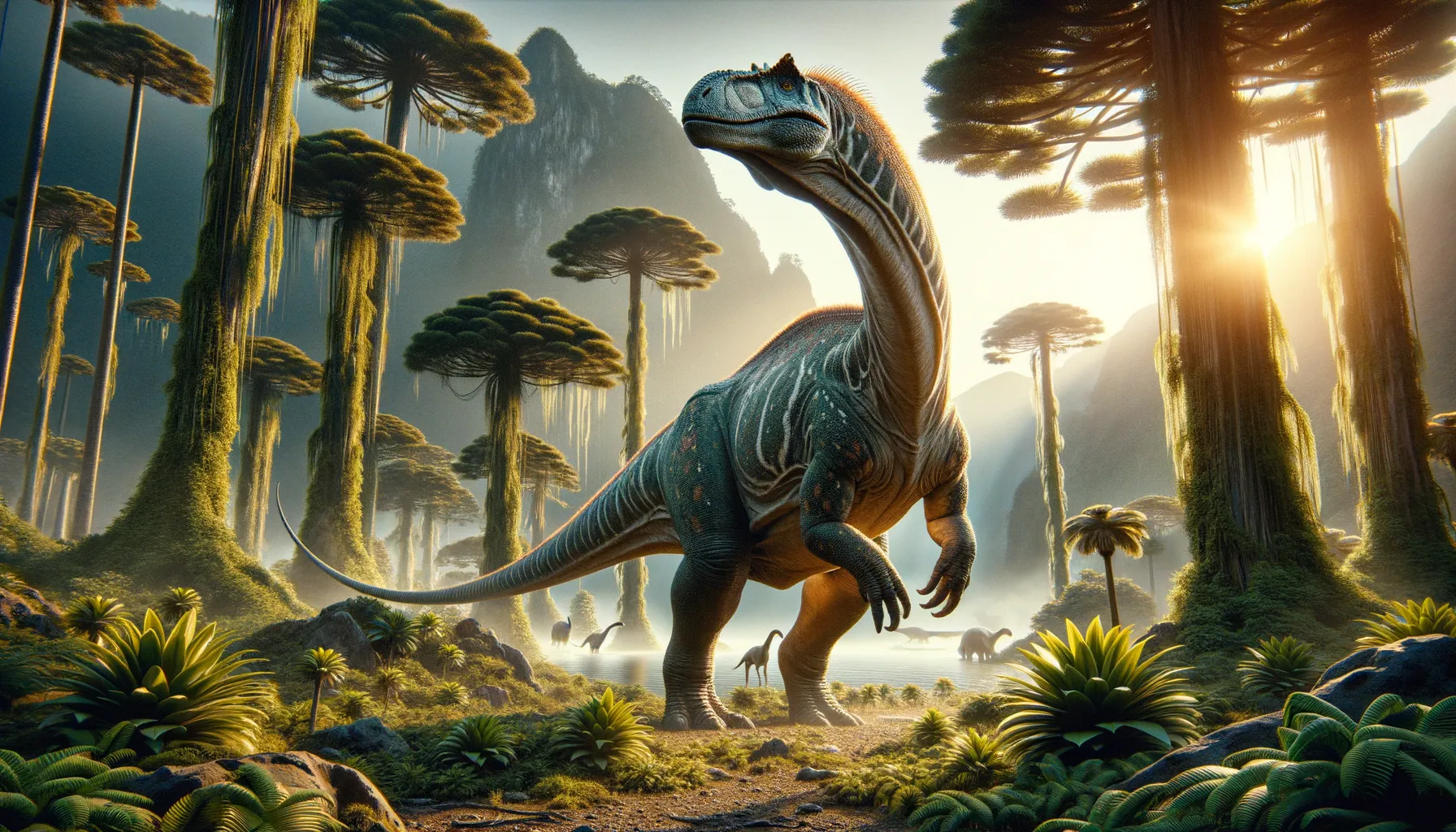
Jainosaurus
Giant herbivore of the ancient Earth.
Period
Cretaceous
Length
Around 18 meters long.
Height
About 6 meters tall.
Weight
Estimated to weigh around 15 tonnes.
Jainosaurus was a massive, plant-eating dinosaur that roamed the Earth during the late Cretaceous period. It belonged to the family of titanosaurs, characterized by its enormous size and long neck. Originating from the region now known as India, Jainosaurus played a significant role in the prehistoric ecosystem, feeding on a diet rich in vegetation. This dinosaur's fossils provide invaluable insights into the diverse range of species that flourished millions of years ago.
Diet
Jainosaurus was a herbivore, feeding primarily on the abundant vegetation of its time. Its diet mainly consisted of leaves, fruits, and possibly some conifers, which it could reach thanks to its long neck.
Hunting
As a herbivore, Jainosaurus did not engage in hunting. It likely spent much of its time in peaceful browsing of plant material. Its sheer size served as a deterrent against most predators.
Environmental challenges
Jainosaurus faced environmental challenges such as shifts in climate and vegetation during the late Cretaceous. Fluctuations in sea levels and volcanic activity might have impacted its habitat. Additionally, competition for food with other herbivorous dinosaurs could have posed a significant challenge.
Speed
Moved slowly due to its massive size.
Lifespan
Lived for several decades.
First discovery
First discovered in India in the 1930s.
Fun Facts
- Jainosaurus was a massive dinosaur that lived during the late Cretaceous period, around 70 million years ago.
- It was named after Dr. Sohan Lal Jain, an Indian paleontologist who made significant contributions to the study of this species.
- Jainosaurus was a type of sauropod, which means it was one of the giant, long-necked dinosaurs similar to Brachiosaurus and Apatosaurus.
- Fossils of Jainosaurus have been predominantly found in India, offering insights into the dinosaur life on the ancient landmass known as the Indian subcontinent.
- This dinosaur was primarily herbivorous and roamed the Earth, feeding on the rich vegetation of its time.
- Jainosaurus is believed to have lived in herds, which would have provided protection against predators.
- The discovery of Jainosaurus fossils has helped paleontologists understand more about the distribution of sauropods in prehistoric times.
Growth and Development
Jainosaurus likely underwent rapid growth during its juvenile stage to reach its full size. Such growth patterns were crucial for its survival, enabling it to reach a size that deterred predators. Fossils suggest that as it matured, its bones strengthened to support its massive weight.
Habitat
Jainosaurus inhabited what is now India, in regions that were likely lush and filled with diverse plant life. Its habitat would have included forests and floodplains, providing ample food sources. The region's warm climate facilitated the growth of flora that supported its dietary needs.
Interaction with other species
Jainosaurus coexisted with a variety of other dinosaur species, including both herbivores and carnivores, though little evidence suggests aggressive interactions. It shared its habitat with smaller dinosaurs, which may have engaged in different ecological niches. Its size protected it from most predators, allowing for peaceful coexistence.
Natural lifespan
Its natural lifespan spanned several decades under favorable conditions.
Reproduction
Reproduction likely involved the laying of large eggs, similar to other sauropods. Fossils suggest that Jainosaurus may have used nesting sites in secluded areas to protect its eggs. Hatchlings would have been much smaller, requiring significant growth to reach adulthood.
Social behaviour
Jainosaurus may have exhibited some social behaviors, possibly moving in herds for protection. This behavior would have been beneficial against predators and helpful in locating food sources. Interaction within these groups could have involved basic forms of communication, possibly through vocalizations or body movements.
Fossil locations
Fossil remains of Jainosaurus have been primarily found in India. These fossils helped paleontologists understand more about the distribution of sauropods in the southern continents. The fossils include partial skeletons which have been critical in reconstructing its appearance and lifestyle.
